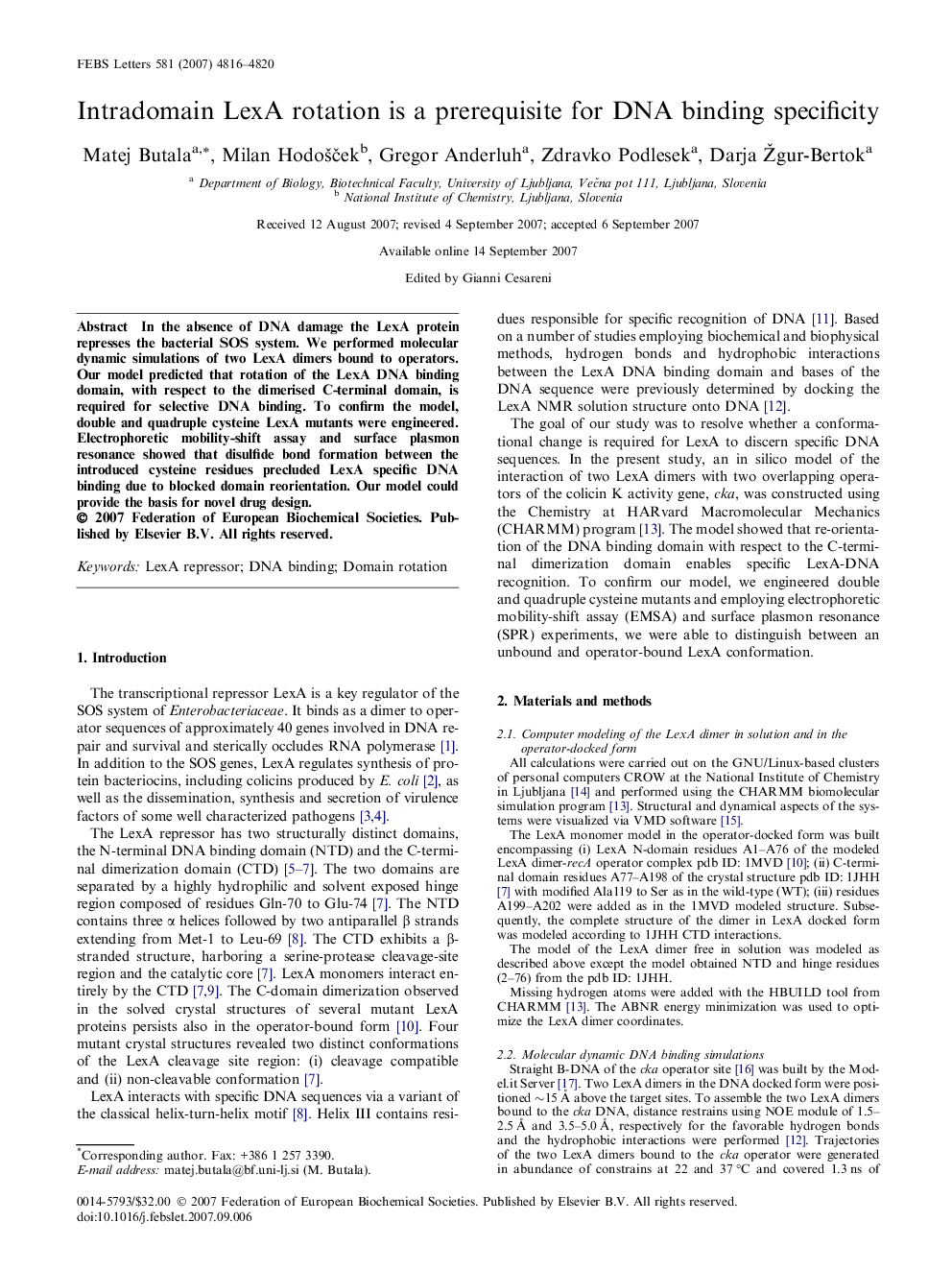| Article ID | Journal | Published Year | Pages | File Type |
|---|---|---|---|---|
| 2050768 | FEBS Letters | 2007 | 5 Pages |
Abstract
In the absence of DNA damage the LexA protein represses the bacterial SOS system. We performed molecular dynamic simulations of two LexA dimers bound to operators. Our model predicted that rotation of the LexA DNA binding domain, with respect to the dimerised C-terminal domain, is required for selective DNA binding. To confirm the model, double and quadruple cysteine LexA mutants were engineered. Electrophoretic mobility-shift assay and surface plasmon resonance showed that disulfide bond formation between the introduced cysteine residues precluded LexA specific DNA binding due to blocked domain reorientation. Our model could provide the basis for novel drug design.
Related Topics
Life Sciences
Agricultural and Biological Sciences
Plant Science
Authors
Matej Butala, Milan Hodošček, Gregor Anderluh, Zdravko Podlesek, Darja Žgur-Bertok,
